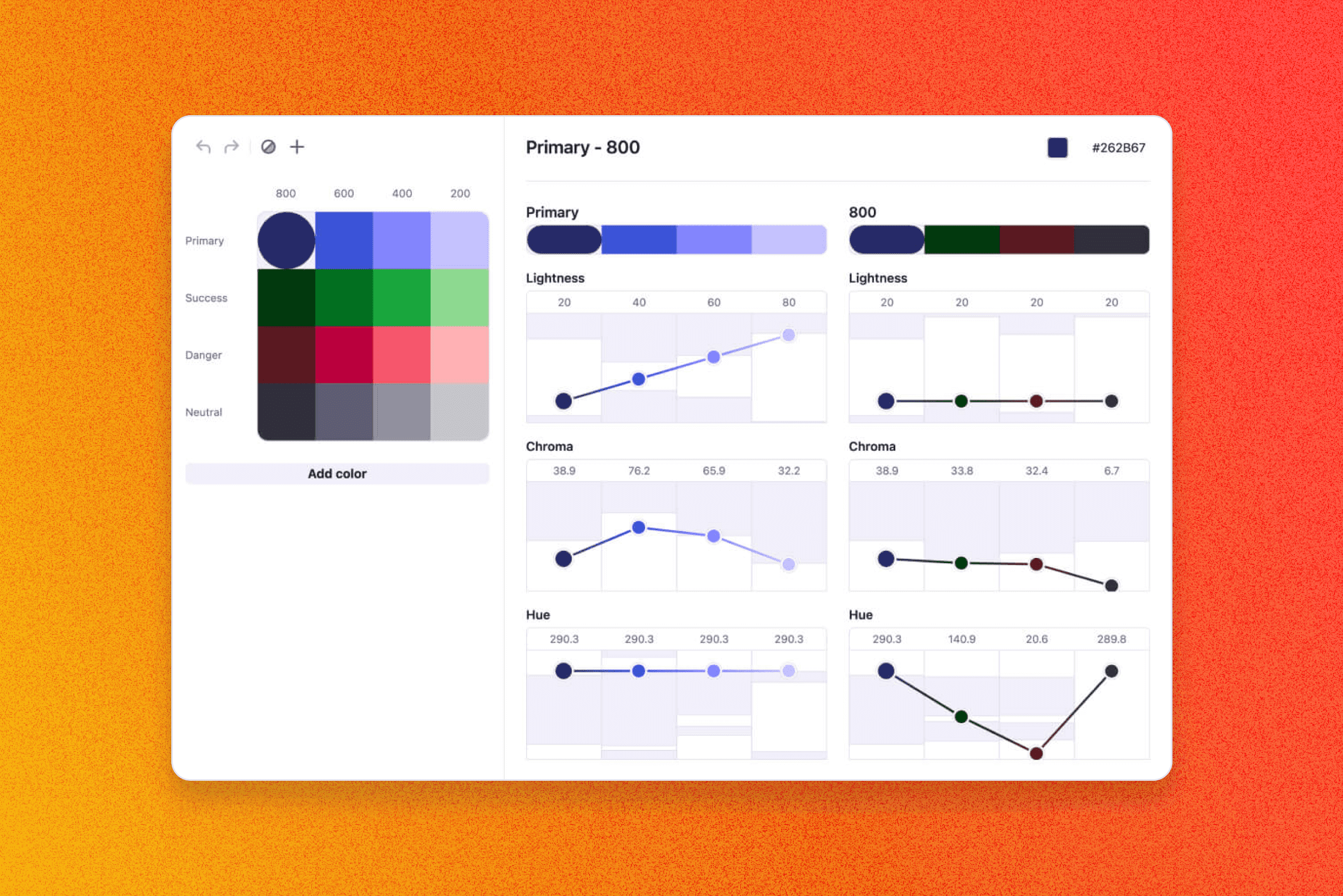
LCH vs OKLCH: what is the difference?
May 7, 2023 · 4 min read
Discover the advantages of LCH and OKLCH color spaces for UI design and color palettes. Learn about their differences and why OKLCH is the better choice.
As the world becomes more and more dependent on technology, it's crucial to ensure that all users, including those with color blindness, have a positive experience while using your products. You as a UI designer can have a significant role in making this happen by designing interfaces that are accessible to everyone, regardless of their visual abilities. In this article, we will explore the importance of designing for color blindness in UI design and provide tips on how to create accessible interfaces.
Color blindness is a vision deficiency where a person is unable to distinguish between certain colors. There are three main types of color blindness: red-green, blue-yellow, and total color blindness.
The most common type of color blindness is red-green color blindness, which affects approximately 7% of men and 0.5% of women. People with red-green color blindness have difficulty differentiating between red and green hues.
There are four types of red-green color blindness based on how much of each color people can see:

Blue-yellow color blindness is less common, affecting approximately 1% of men and 0.01% of women. People with blue-yellow color blindness have difficulty differentiating between blue and yellow hues.
There are two types of blue-yellow color blindness based on how much of each color people can see:

Total color blindness is the rarest form of color blindness and affects only a small percentage of the population. People with total color blindness can only see in shades of gray and have difficulty differentiating between any colors.

Designing for color blindness is essential for several reasons. Firstly, it ensures that all users have equal access to information. Secondly, it helps to prevent confusion and possible misinterpretation of information, especially in cases where colors are used to convey information. Finally, designing for color blindness is a sign of inclusivity and demonstrates your or the company's commitment to creating accessible products for anyone.
Create your palette in minutes
Whether you’re new to color palettes, or a pro looking for advanced tools, create your best palette in minutes.
Designing UI with color blindness in mind can have positive effect even for users without any visual deficiencies. Here are a few tips on how to design accessible interfaces:
When designing interfaces, it's crucial to avoid using color as the only means of conveying important information. For example, instead of using a red circle to indicate a warning, use an exclamation mark alongside it. This is a good practice to follow even when you are not focussing on color blindness, since it can remove ambiguity.

Using high contrast color schemes can make it easier for people with color blindness to distinguish between different elements on the screen. It's essential to choose colors that have enough contrast to ensure that all users can see and understand the information presented.
It's important to test your design to ensure that it's accessible to people with color blindness. There are several tools available that allow you to do that. This can help you identify any issues with your design and make the necessary changes. Here are our favorite tools:

Similar to the first point, alternative text descriptions can provide additional information for users with color blindness. For example, instead of using just a green checkmark to indicate that a task has been completed, use the text "Task Completed" alongside it. Again, this is a good practice even for regular users as it can clear up the meaning.

In conclusion, designing for color blindness is an important part when creating accessible UI. By understanding the different types of color blindness, using high contrast colors, avoiding conveying information only by colors, and testing your designs, you can create UI that has a positive user experience for all. Remember, designing for color blindness is just one part of creating a great UI color palette, so make sure to consider other accessibility considerations as well.

May 7, 2023 · 4 min read
Discover the advantages of LCH and OKLCH color spaces for UI design and color palettes. Learn about their differences and why OKLCH is the better choice.

December 8, 2022 · 7 min read
When working on UI, it's important to understand the different color formats available for use on the web. Learn about the various color formats and when to use them in your work.

October 8, 2022 · 6 min read
Dark Mode has swallowed the world. It's probably the most requested feature in any app or website, and every designer's passion project. Learn about its benefits, disadvantages, and what you should consider when creating a dark theme.
Whether you’re new to color palettes, or a pro looking for advanced tools, we’ll have you set up and ready to create your best palette in minutes.
Get started for free